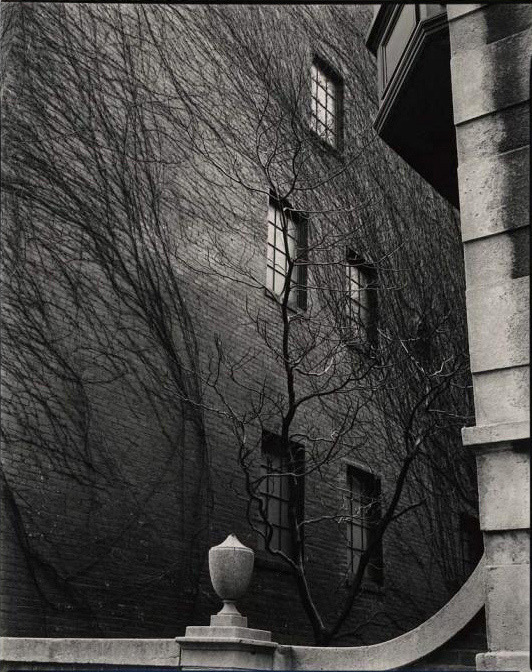Photo

BOSCH, Hieronymus (circa 1450–1516)
Ascent of the Blessed between circa 1490 and circa 1516 Oil on panel, 86.5 x 39.5 cm Palazzo Grimani, Venice Ed. Orig.
1K notes
·
View notes
Photo

Artemisia Gentileschi. Mary Magdalene in Ecstasy. 1613-21
992 notes
·
View notes
Quote
His soul swooned slowly as he heard the snow falling faintly through the universe and faintly falling, like the descent of their last end, upon all the living and the dead.
James Joyce, The Dead
7 notes
·
View notes
Photo

Alfred Sisley, The Sevres Bridge, 1877
112 notes
·
View notes
Photo

Arthur Dove (American, 1880–1946), Sunrise IV, 1937.
856 notes
·
View notes
Quote
La grandiose vision d'un processus cosmique perpétuel tel que 'l'amour dans le monde se transforme en amour dans le ciel, et fait retour dans le monde'. En d'autres termes, Whitehead ne chevauche même pas la puissance iconoclaste des penseurs de la démesure, il ne profite pas des latitudes admises pour les penseurs de l'extrême, ceux qui exposent la pensée aux risques de la folie, au chaos de l'impensable. Il expose au contraire ceux qui le suivent à la menaçante proximité de visions du monde célébrant l'ordre et le progrès.
Isabelle Stengers
0 notes
Photo

William-Adolphe Bouguereau, Detail from The First Mourning (1888)
110K notes
·
View notes
Photo




Treasures below the surface of the page
An important Bible manuscript made the news this week. The University of Cambridge announced it was aiming to purchase (for 1.1. million pounds) the Codex Zacynthius, a so-called palimpsest containing the Gospel of Luke copied in the 6th or 7th century (pic 2). A palimpsest is the answer to a universal truth that ruled the medieval scriptorium: when you run out of calfs and sheep, you can’t make any more books - their skins being the source for the objects’ parchment sheets. Just one thing remained: scraping clean the pages of an existing book and fill the blank surfaces with the desired text. Presto, a medieval “palimpsest” was born (from the Greek palimpsestos, “scraped again”). Like all palimpsests, the Zacynthius Codex contains an upper text (in this case a 13th-century liturgical work) and an older lower text (the Gospel of Luke, scraped away 600 years earlier). These fascinating medieval “two-for-ones” hide all sorts of treasures below their surface, like a Gospel Book from the 6th century hidden under a 13th-century Isidore of Seville (pic 1), a really old Latin copy of Augustine underneath a Hebrew Genizah fragment (pic 3), or an early-modern musical score written over a 14th-century work (pic 4). Recycling is clearly not a modern invention.
More information about the Codex Zacynthius in this press release. Here are the zoomable pages of another important specimen, the Archimedes palimpsest. The Genizah fragment is discussed here, the music manuscript here, and the top pic here.
690 notes
·
View notes
Photo





Brett Weston.
Exhibition: City of Abstractions: Brett Weston in New York, 1944-45 at 1285 Avenue of the Americas Art Gallery, New York.
806 notes
·
View notes
Photo

Carved figure with feathers. The king-priest, wearing a net skirt and a hat with leaves or feathers, stands before the door of a temple, symbolized by two great maces. The inscription mentions the god Ningirsu.
Made of limestone, Early Dynastic Period, circa 2700 BCE.
Courtesy & currently located at the Louvre, France. Photo taken by Marie-Lan Nguyen.
362 notes
·
View notes
Photo

This 14th century illuminated manuscript detail portrays an interesting concept of an ideal study.
Apart from the, in our eyes, unusual way of stacking books (by the way, here is an interesting article about why we store books the way we do, today), the study houses a number of interesting and peculiar items, including a ptolemian map (a precursor to an atlas or globe, I suppose), an astrolabe, a girdle book, a book stand, an early clock, some glass jars and what looks like a basket of herbs, as well as (of course, this being European Middle Ages) a devotional picture.
To this day, I think a library or a study is not complete without a few such odd gadgets and trinkets.
196 notes
·
View notes




